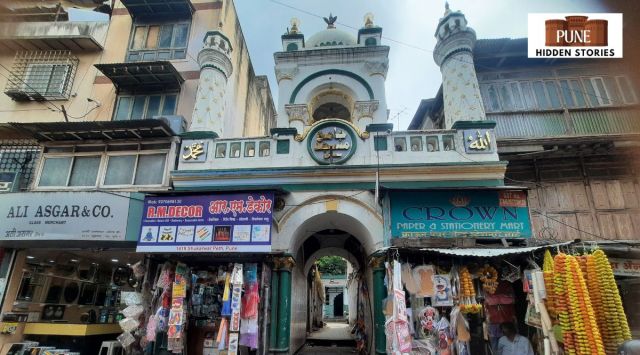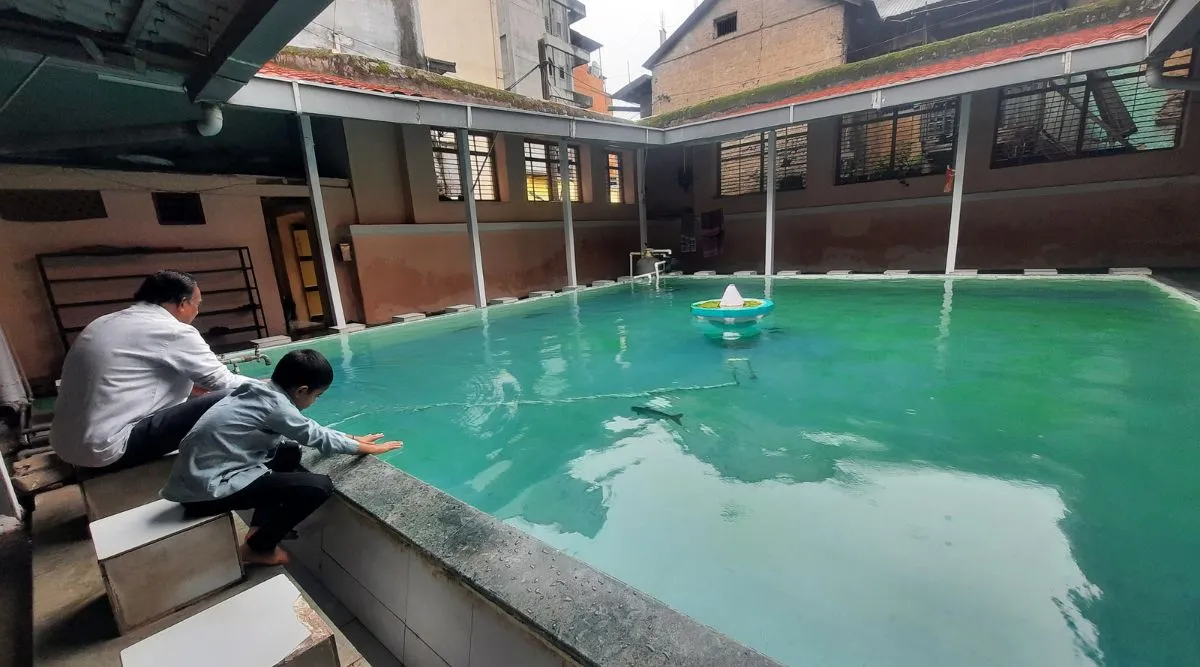Shukrawar Peth, Pune, MAHARASHTRA:
The City Jama Masjid located in Pune’s Shukrawar Peth was built in 1839 for Rs 15,000 from public contributions.

On May 10, 1857, Indian sepoys in Meerut broke into an uprising that is now remembered as India’s first war of independence. While Pune, then Poona, did not see any active conflict unlike several other cantonment towns in the country, tension was palpable as the news reached the city through newspapers and word of mouth. The city did see surreptitious meetings, pamphleteering and a surge in rumours, as per accounts by historians.
Among the reactions to the mutiny that have been recorded by historians is that of prayers offered at City Jama Masjid on May 22, 1857, a Friday, for the success of the mutiny.
“After the usual Friday prayers, some 10-12 men remained in the mosque and commenced talking about the war operations before Delhi. The whole party simultaneously rose clapping their hands in the attitude of prayer, bought with the aid of the Prophet on behalf of the mutineers,” as per a contemporary government report quoted in South India in 1857 War of Independence by V D Divekar.
The attendees were identified as Jaffer Mulla, Mahomed Hayat, Hussain Arab, Rhaimu Naichiwala, Maddar Naichiwala, Imam Pattewala and Jamaluddin who were later reported to the police by the informers. It is not known if any punitive measure was taken against the attendees.
The Gazetteer of the Bombay Presidency of 1885 describes the mosque as a “chief Muhammadan place of worship in the city” built around 1839 by public subscription for Rs 15,000.
“The back wall has a niche with a step against it, and is covered with texts from the Kuran. In front of the mosque is a well-sanded yard with a fountain in the middle. On one side is a washing cistern or haud. Attached to the mosque is a Persian school, a rest house and some dwellings whose rent go to the mosque fund. All Muhammadan social and religious meetings are held in this mosque,” reads the Gazetteer.

Presently, the entrance of the mosque in busy Shukrawar Peth is easy to miss as vintage shops stand shoulder to shoulder. The narrow entrance opens into a moderately spacious courtyard, 100 feet in width and 15 feet in length, before the enclosed mosque starts. There is a wuzukhana, the washing cistern, on the left side with a small fountain-like structure in the middle and the cistern’s edges lined by stools for the namazees to sit on as they do the ablutions before prayers.
That the mosque is over 180 years old is barely recognisable – due to the fresh construction of the front Sahan, the courtyard where namaz is offered, and several coats of paint on the exteriors – until one enters the innermost area which reveals its stone build, topped by a dome.
Maulana Zameeruddin, 64, the mosque’s imam, says that a few decades ago, the mosque’s roof was extended by 15 metres to accommodate more namazees. The move, however, shortened the length of the courtyard and also required the removal of a fountain that was in front of the mosque.
Zameeruddin has been the imam here for the last 40 years. “Before me, my elder uncle was the imam. Earlier, people from far-off areas such as Khadki, Dapodi and Deccan used to come to offer Friday prayer here as this is a historic place. Now, people have shifted to newer areas of the city, such as Kondhwa, where bigger mosques have come up and people prefer to pray there. Still, some people make it a point to come here, especially for Friday prayer,” he said.
For a long time, the Pune civic body’s Urdu-medium school (School No 22), operated from inside the rooms constructed within the courtyard until it shifted to a nearby location later.
Siraj Tamboli, a 65-year-old namazee who visits the mosque several times a day, said, “I belong to the third generation from my family that prays in this mosque. My sons and grandsons also come here.”
source: http://www.indianexpress.com / The Indian Express / Home> News> Cities> Pune / by Atikh Rashid, Pune / July 29th, 2024








